
 Neko Senpai
Neko Senpai About Type of B/L ! Revised Ver.!
Video of This Article
 Kamome Senpai
Kamome Senpai This is 7:07 Video!

Hello, it’s IINO.
Today, I would like to talk about the type of B/L. I have made a video on the same subject before, but I would like to explain it more clearly using a different expression.
So, let’s get started.
Basic Role of B/L
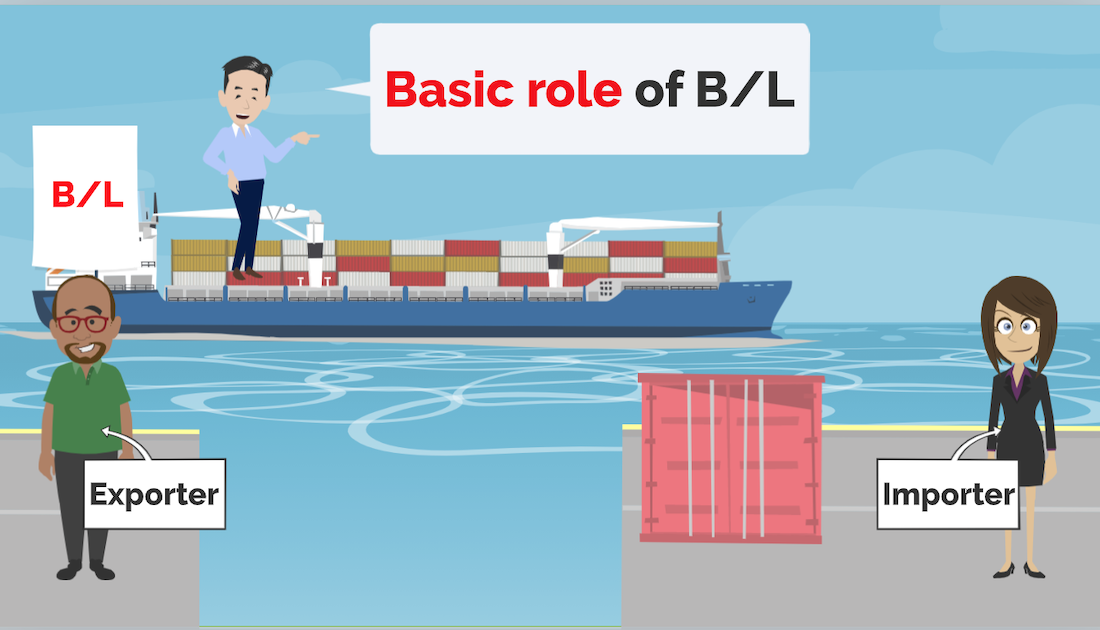
Before explaining the different types of B/L, let me first briefly explain the basic role of B/L.
B/L is an important document in international transportation and the importer must obtain B/L from the exporter in order to pick up the shipment.
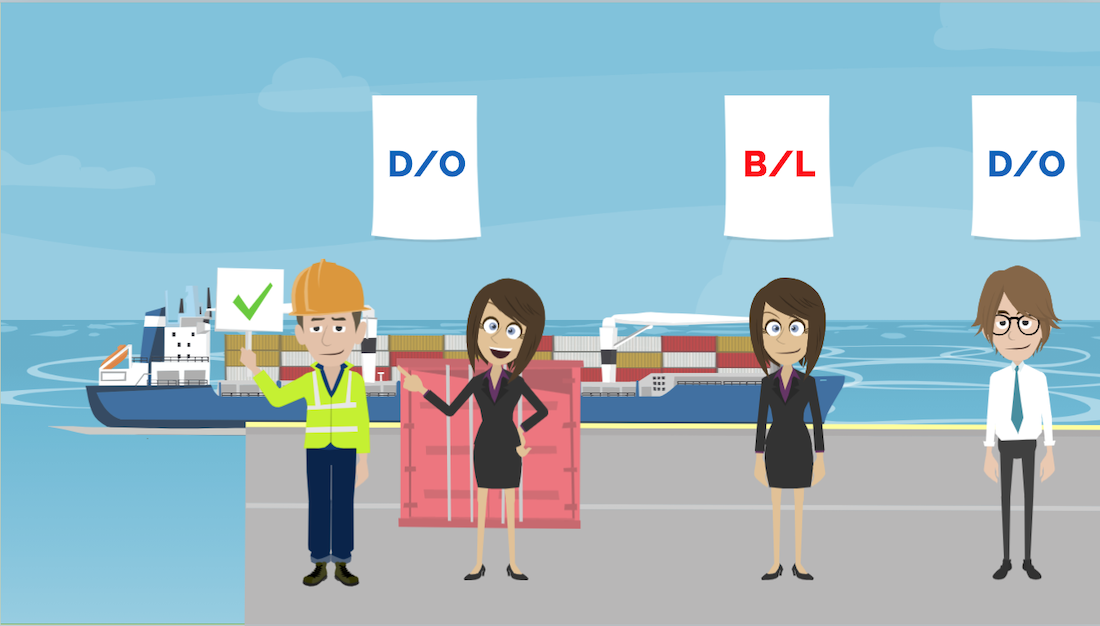
And then, B/L is exchanged for D/O which is the cargo delivery document.
The importer picks up the shipment with D/O. It is important to note that you cannot receive the cargo only with B/L.
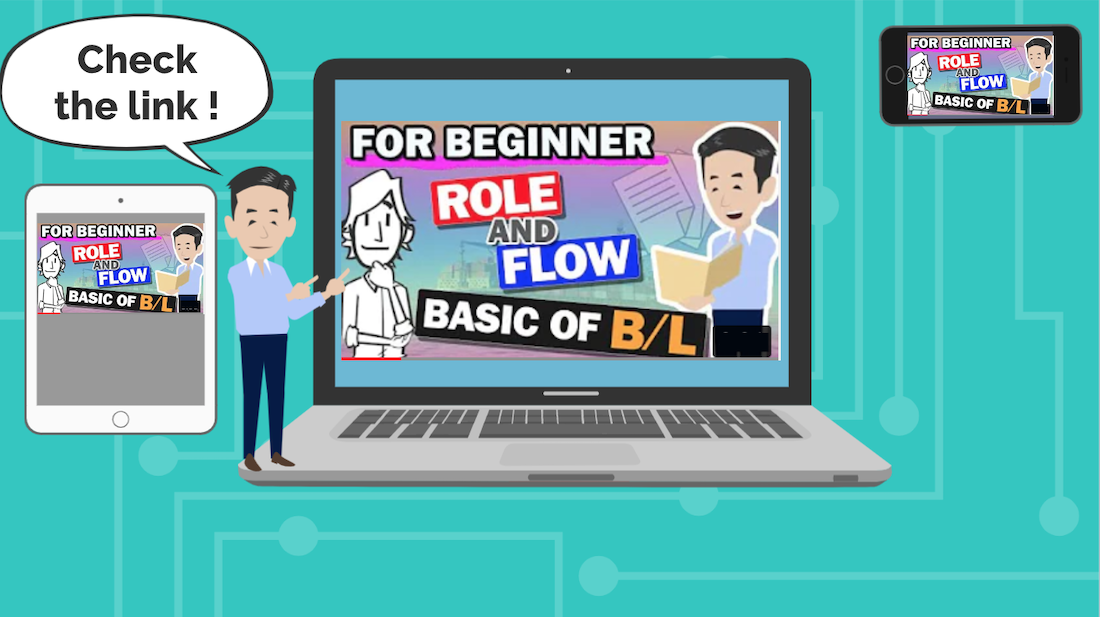
The basic role of the B/L is explained in another video. Please refer to the link in the overview section of this video for more details.
Explanation Flow and Role of B/L (Revised Version)
Type of B/L
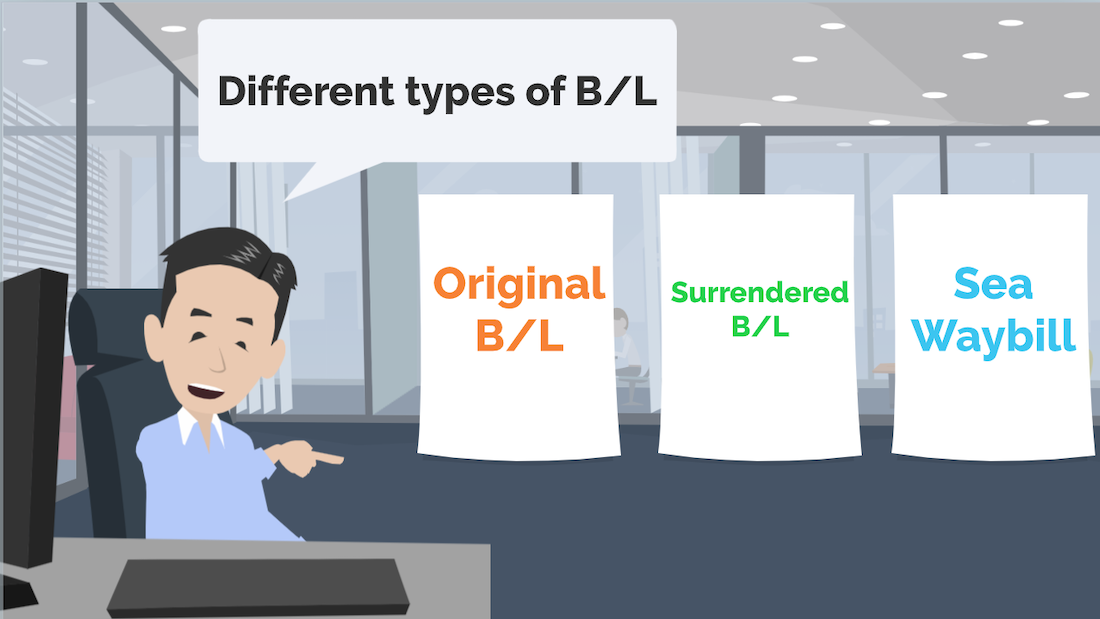
I will now explain the different types of B/L. The three main types are as follows:
Original B/L
Surrendered B/L
Sea Waybill
Let me explain them one by one.
Original B/L
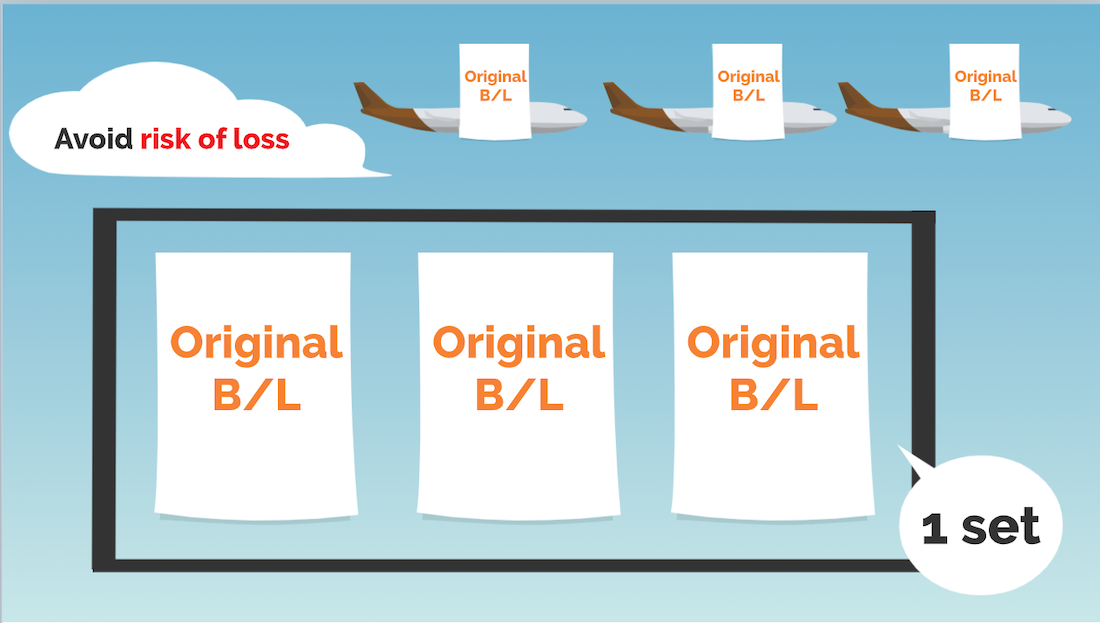
The first one is Original B/L. Three copies of B/L will be issued, so keep in mind that three copies make one set.
It is also a business practice to send three copies of Original B/L in multiple sending to avoid the risk of loss.
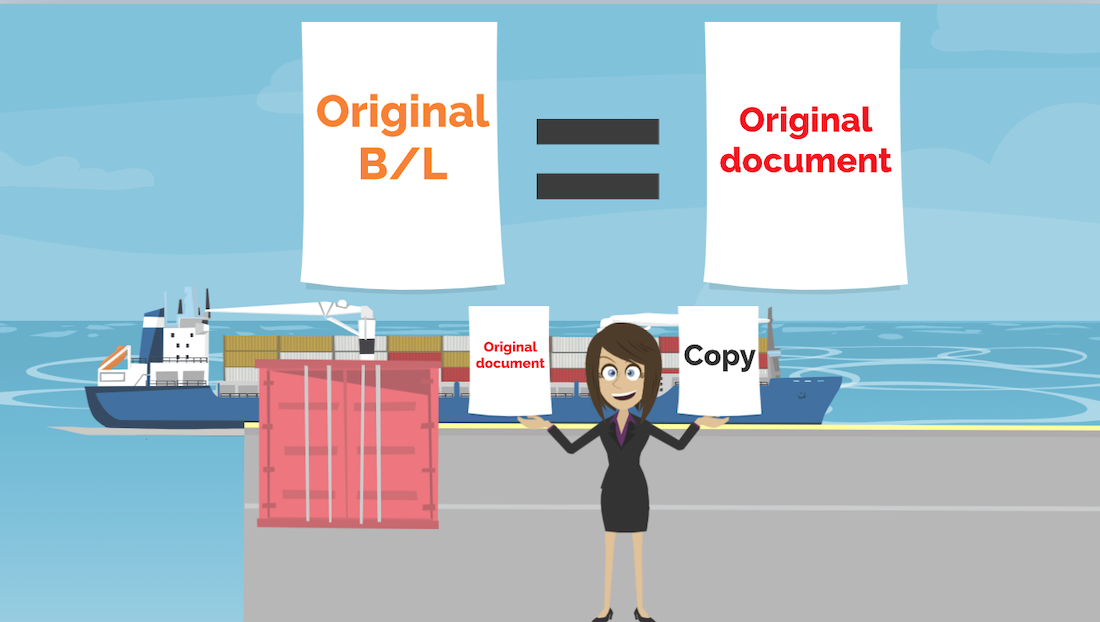
Original B/L as the name implies is the original document.
The importer must have the original, not a copy, of the B/L in order to pick up the shipment.
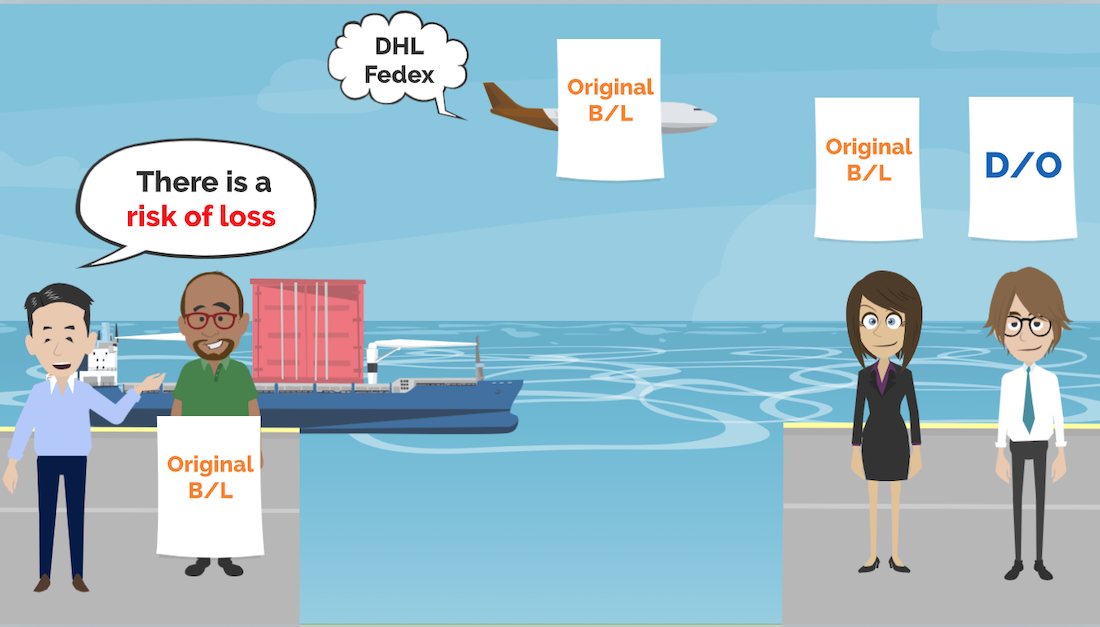
Let’s take a look at the flow of Original B/L.
When the vessel leaves the port, the exporting forwarder issues Original B/L and sends it to the exporter
The exporter sends the original B/L to the importer by courier such as DHL or Fedex
Then, when the ship arrives at the port, forwarder on the import side issues D/O
The importer who obtains the original B/L exchanges B/L for D/O
Since the original documents are handled in this way, there is a risk of loss. This is the flow of B/L.
Surrendered B/L
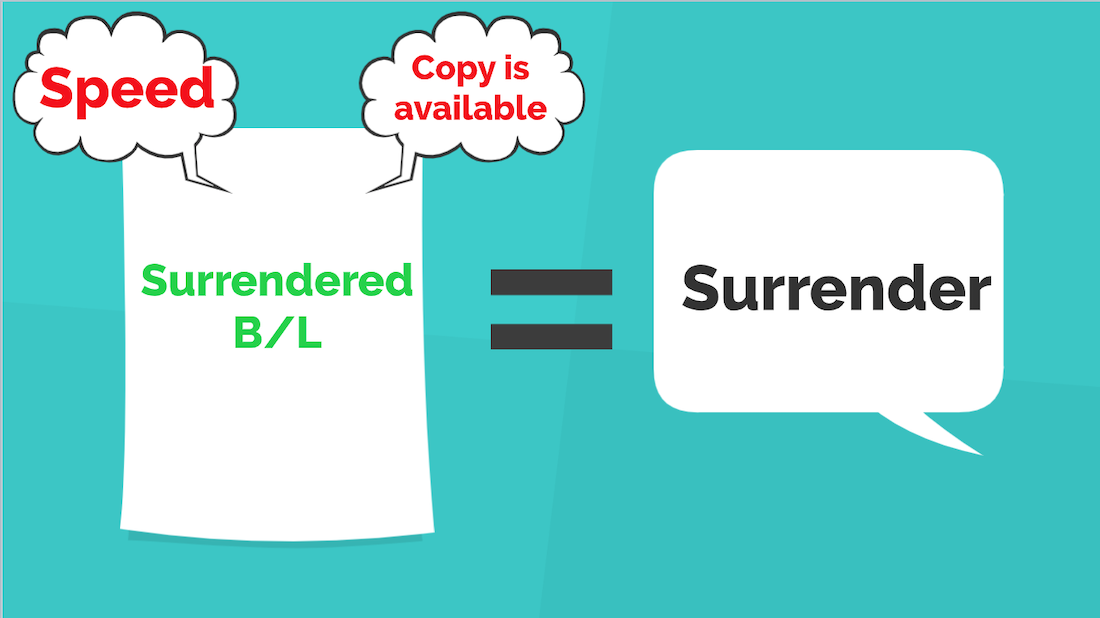
Next, let’s talk about Surrendered B/L.
Surrendered B/L is also called surrender in business practice. The features of a Surrendered B/L are “speed” and “copy is available”.
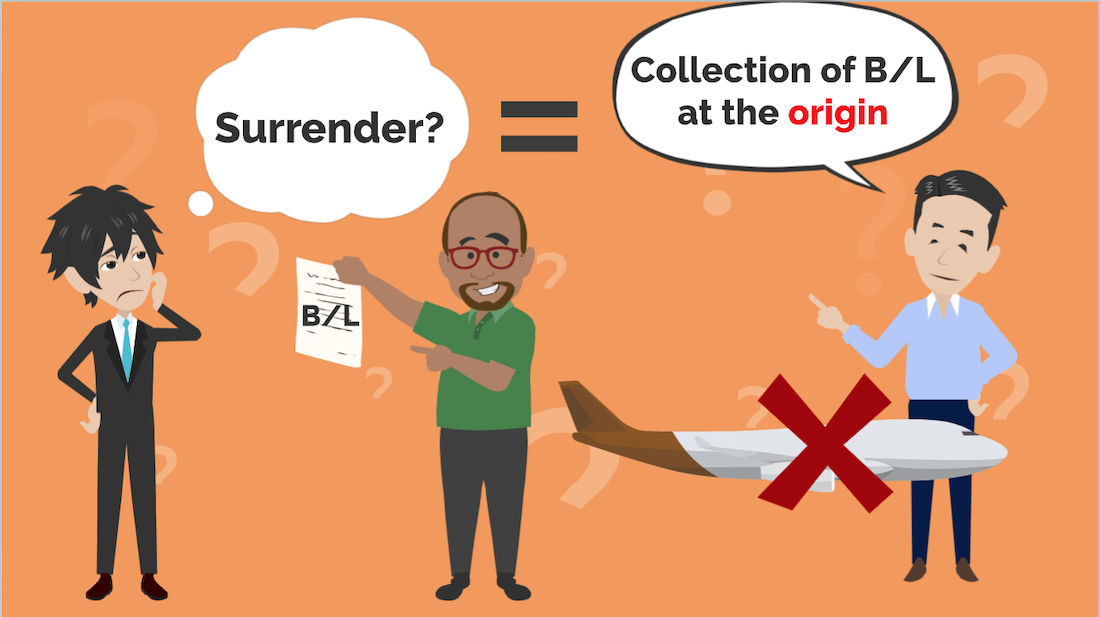
First of all, what does “surrender” mean?
Surrender refers to the collection of B/L at the origin, it means that B/L is not sent to the importing country but collected at the origin the exporting country.
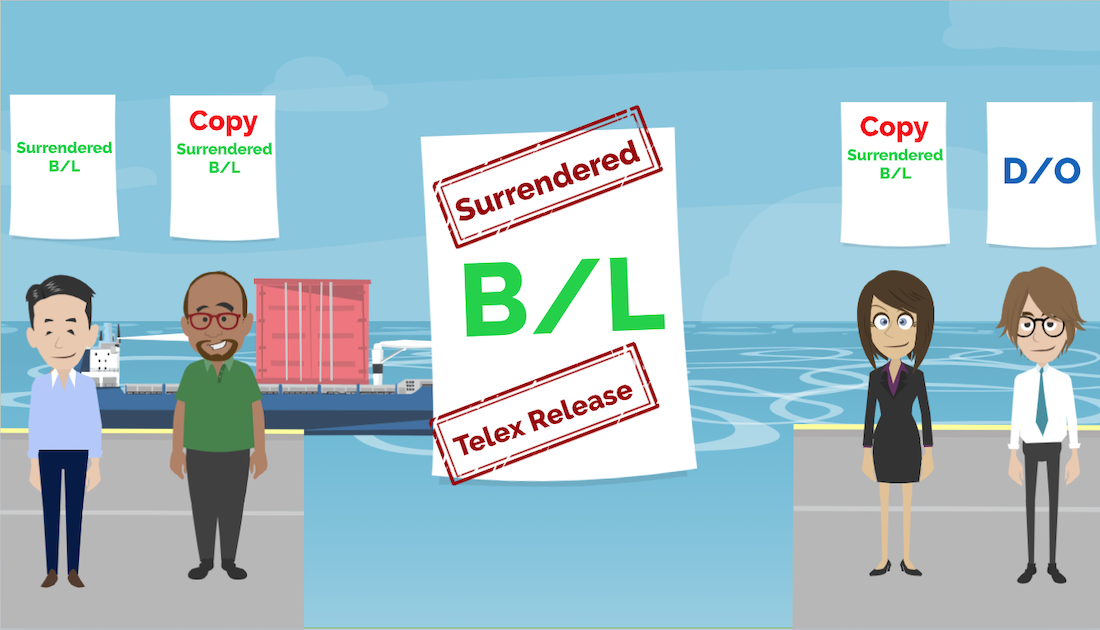
Once you surrender, B/L does not need to be the original. The importer can exchange D/O for B/L sent copy instead of the original.
Surrendered B/L will be stamped as Surrendered or Telex Release. You can understand that Telex Release is the same as Surrender.
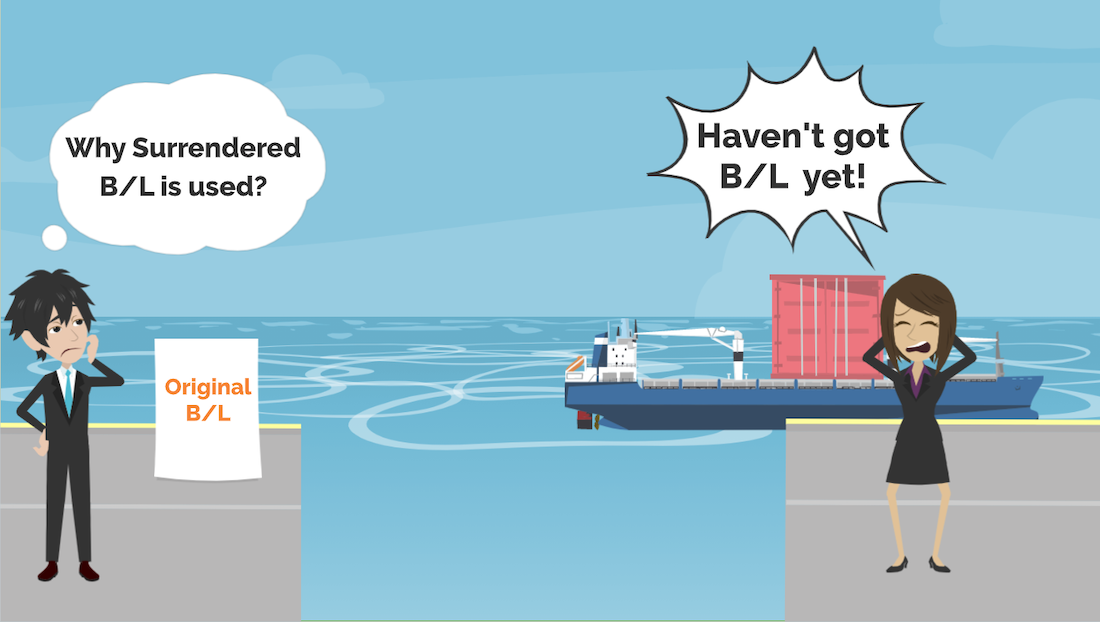
I will explain why Surrendered B/L is used instead of Original B/L.
In today’s ocean transportation, there is some case that the vessel may arrive at the port before the importer can receive Original B/L due to the high speed of the vessel.
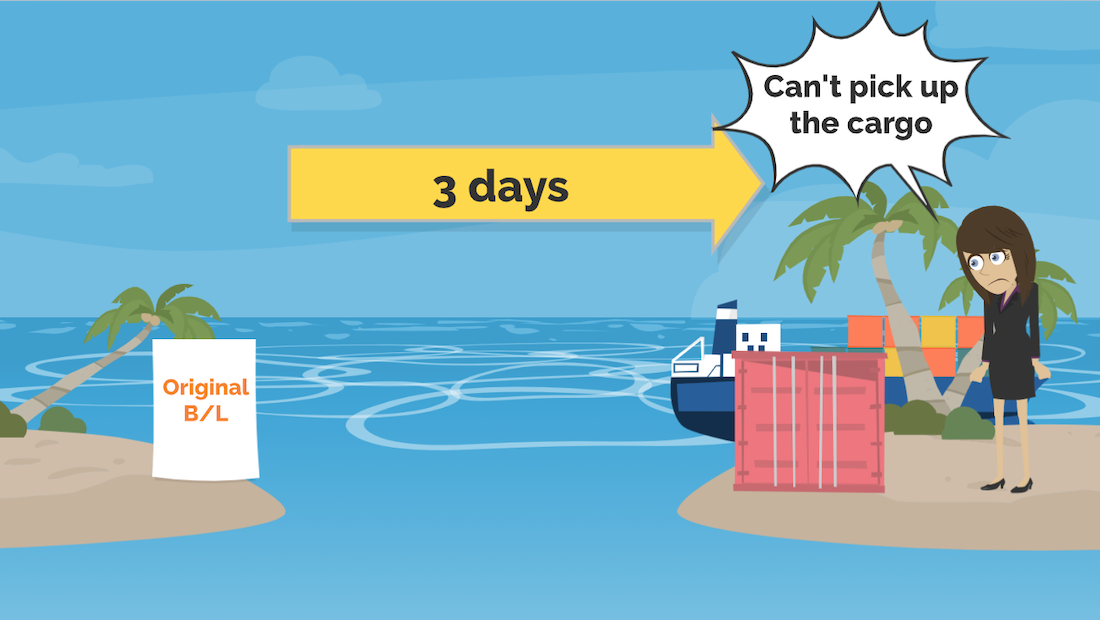
Especially when transporting cargo to neighboring countries, the vessel arrives at the port in only three days or so as the period of transportation.
If we use Original B/L in such cases, the importer cannot pick up the cargo until Original B/L is sent to him.

However, different from Original B/L which needs to be sent original, Surrendered B/L just need the exporter to instruct the forwarder to surrender from the beginning and pays the fee.
After that, the exporter sends a copy of the B/L to the importer.
The importer can exchange D/O with a copy of B/L, which enables speedy trade transactions.
This also has the advantage of reducing the risk of losing B/L.
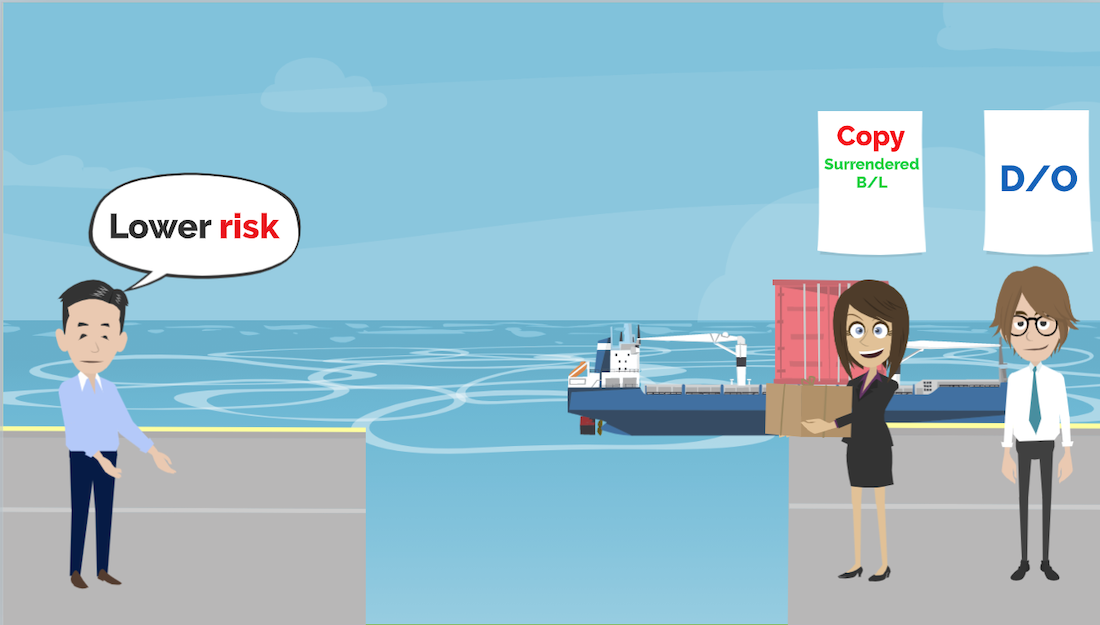
Also, Surrendered B/L is often used to control the payment for products. The exporter can hold Original B/L not sending to the importer, even after the ship leaves port and B/L is issued.
The exporter arranges for a surrender of B/L and send a mail with a copy one to the importer, when confirming the payment for the product from the importer.
It takes a lot of time to send Original B/L by mail and a risk of loss, so this method is often used in trade.
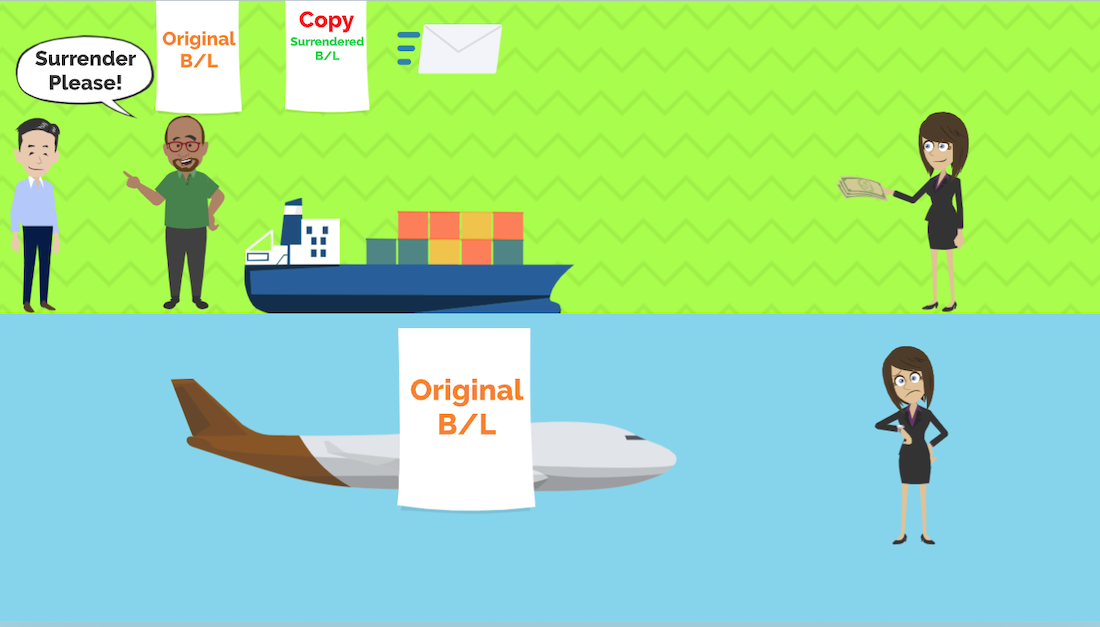
This flow prevents the risk for the importer from not shipping the product, even though paying in advance.
And also for the exporter, it prevents the risk of shipping the product but not collecting the payment.
Sea Waybill

Finally, there is Sea Waybill.
Sea Waybill is slightly different from B/L, it is not a security. Since it is not a security, Sea Waybill cannot be used for transactions using L/C.
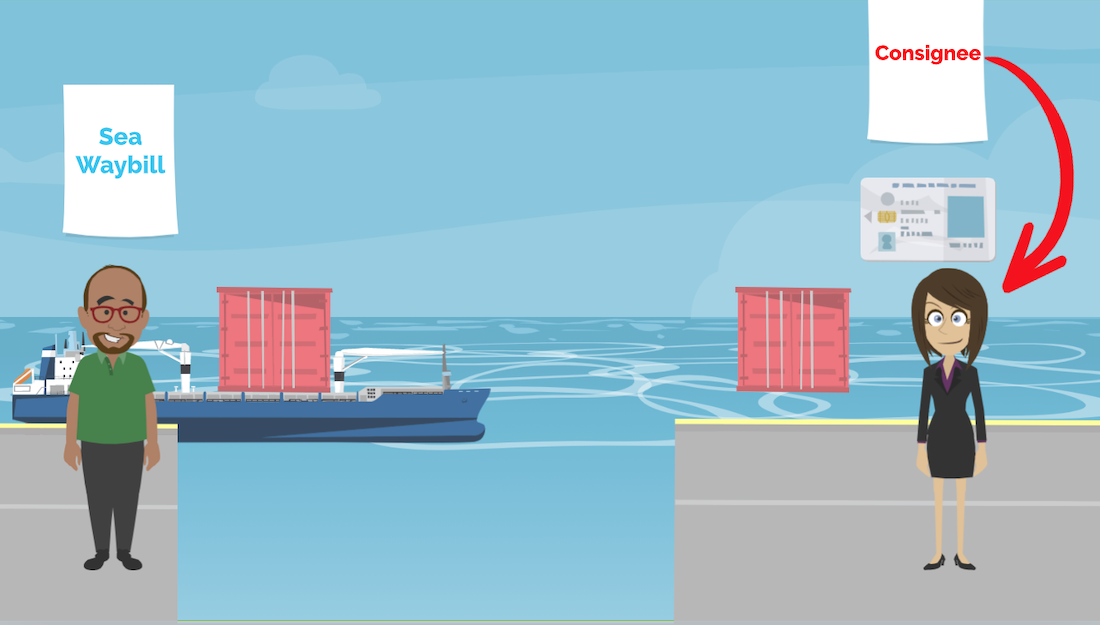
However, Sea Waybill has a big advantage.
Once Sea Waybill is issued and the importer is proven to be the same as the consignee on the document, the shipment can be picked up at the place of import.
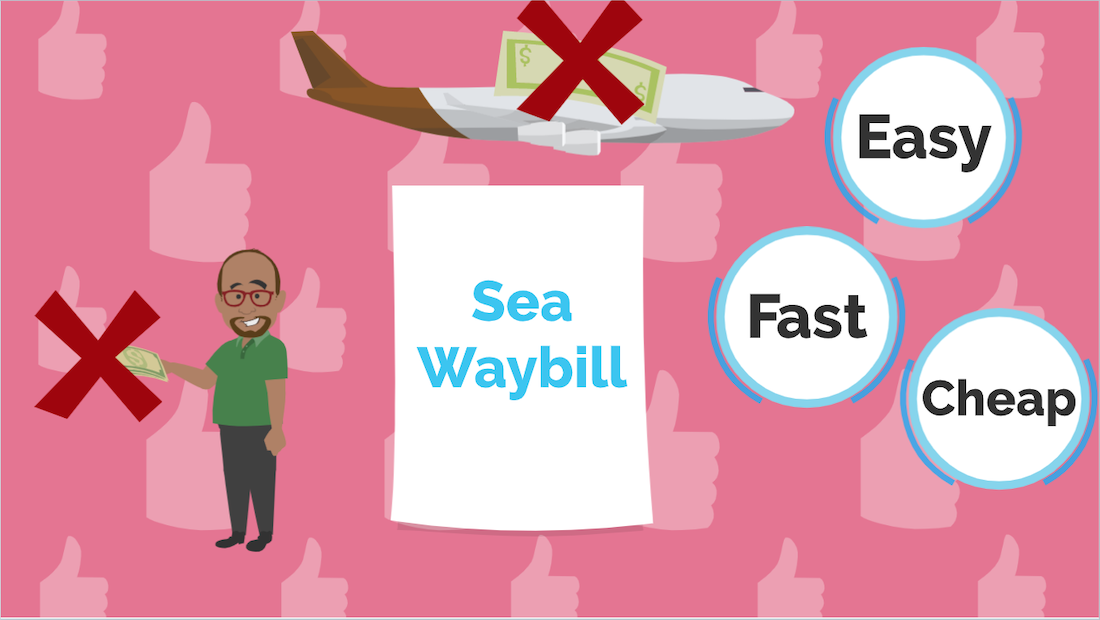
There is no cost of sending the original like Original B/L and surrender fee like Surrendered B/L. Anyway, the character of Sea Waybill is easy, fast and cheap.
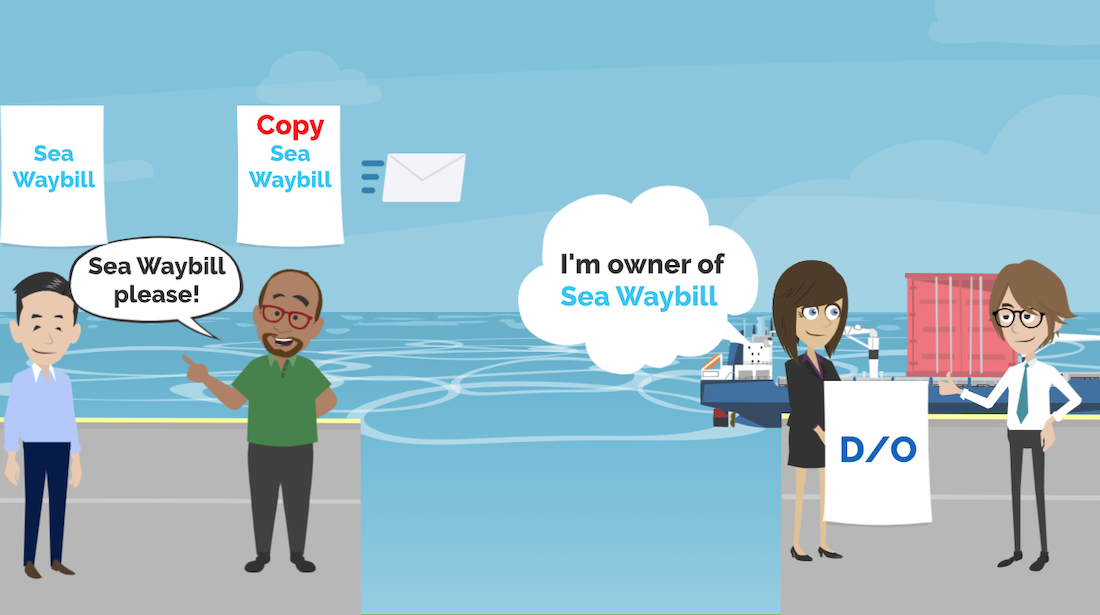
The process is following. The exporter requests to issue Sea Waybill from the beginning instead of B/L.
When the vessel leaves the port, Sea Waybill is issued and a copy is sent to the exporter.
The exporter sends a copy to the importer. If the importer can prove that he is the owner of Sea Waybill, he can exchange for D/O.
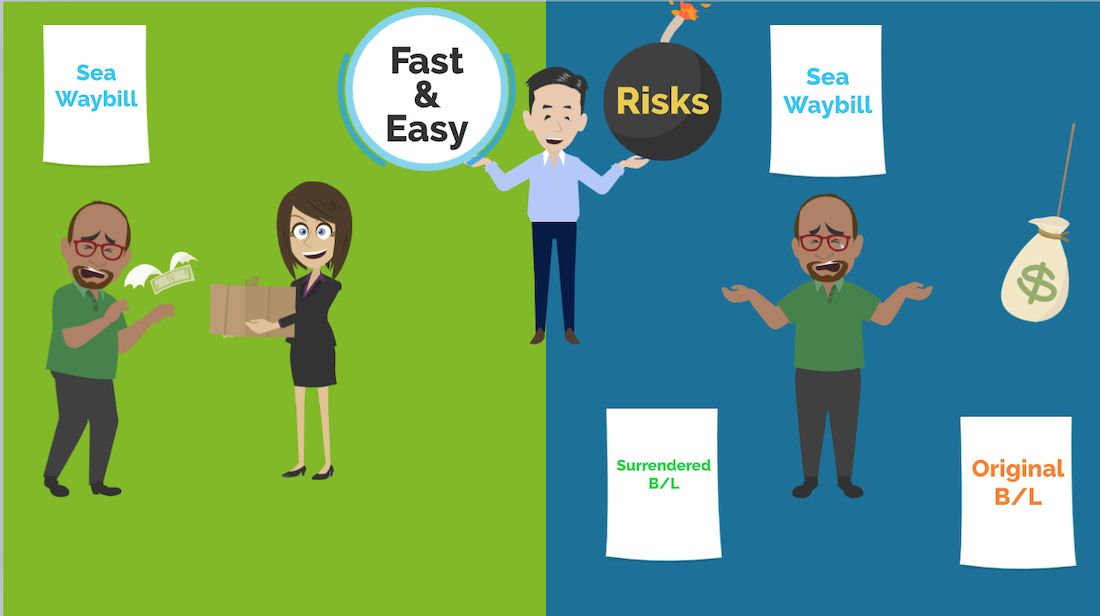
Anyway, it’s fast and easy, that’s what Sea Waybill is all about. However, it also has its risks.
Once Sea Waybill is issued, the importer can pick up the cargo, so the exporter has a risk to collect payment.
In case Original B/L or Surrendered B/L, it is possible to control the payment, but with Sea Waybill, it becomes difficult to do so.
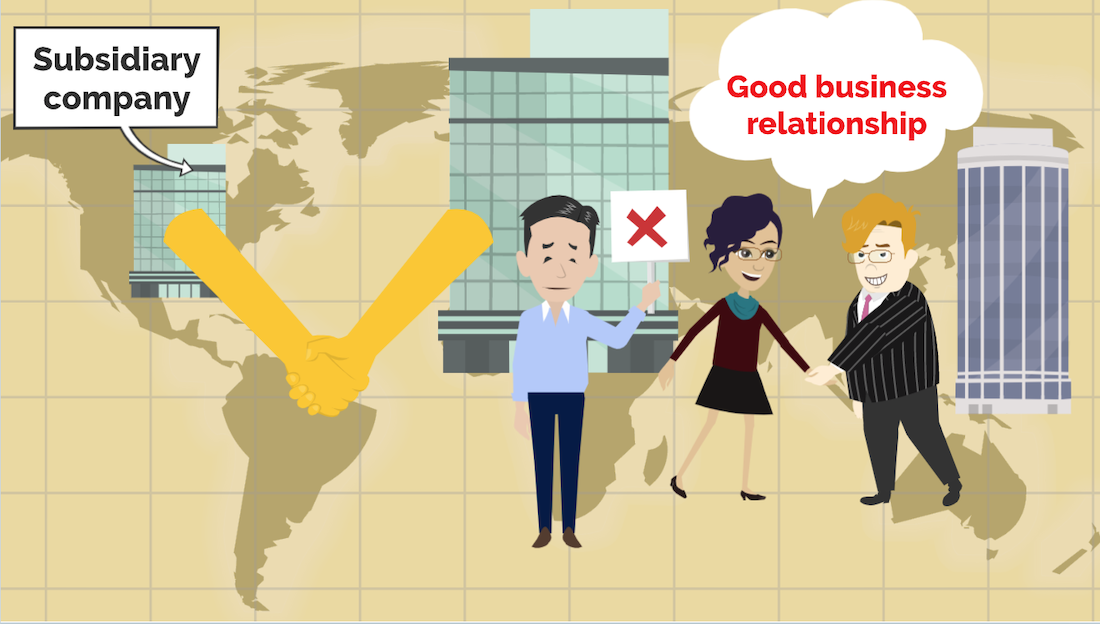
Therefore, in order to use Sea Waybill, it is important to have a business relationship with the trading partner, such as a parent-subsidiary relationship overseas or a long track record of doing business with them.
Some forwarders will not easily issue Sea Waybill, in order to avoid such problems.
Summary
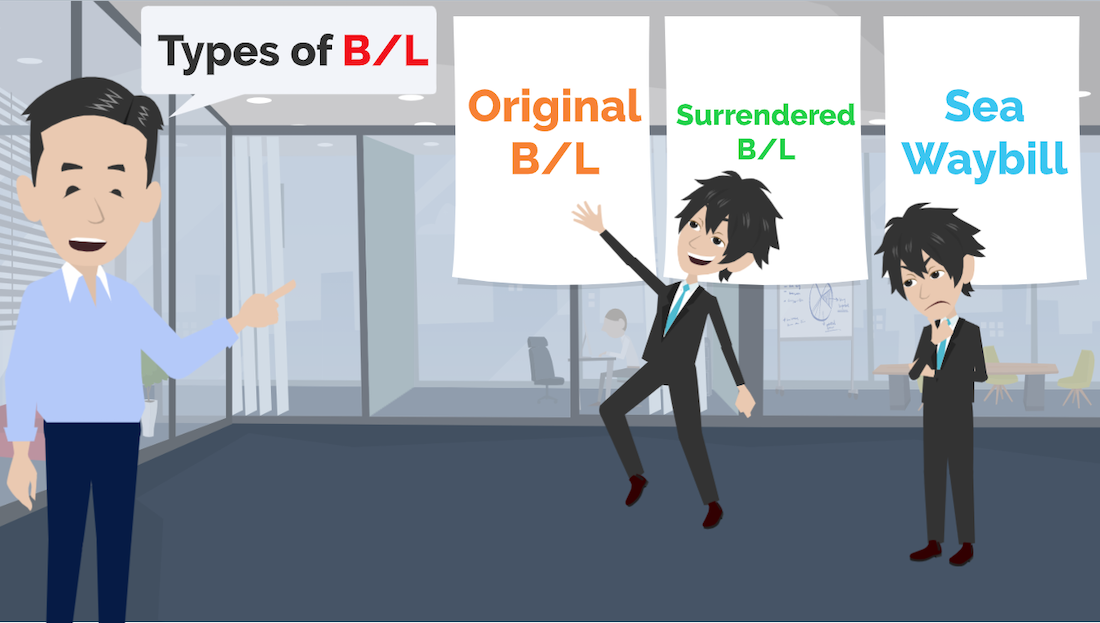
In this video, I explained the types of B/L.
Original B/L
Surrendered B/L
Sea Waybill
Each B/L has its own characteristics.
Make sure what I have explained in this video and please choose the best B/L for your situation.
That’s all for today. If it is useful and understandable, I am so glad you to subscribe to our channel and share it on SNS.
I’ll see you in the next video. Thank you very much!
Contact to IINO san

★Contact to IINO san★
—————————————–
FaceBook Page
https://www.facebook.com/iinosaan
Linked In Message
https://www.linkedin.com/in/shinya-iino/
Twitter DM
https://twitter.com/iino_saan
—————————————–
 IINO
IINO I’m waiting for your contact!








